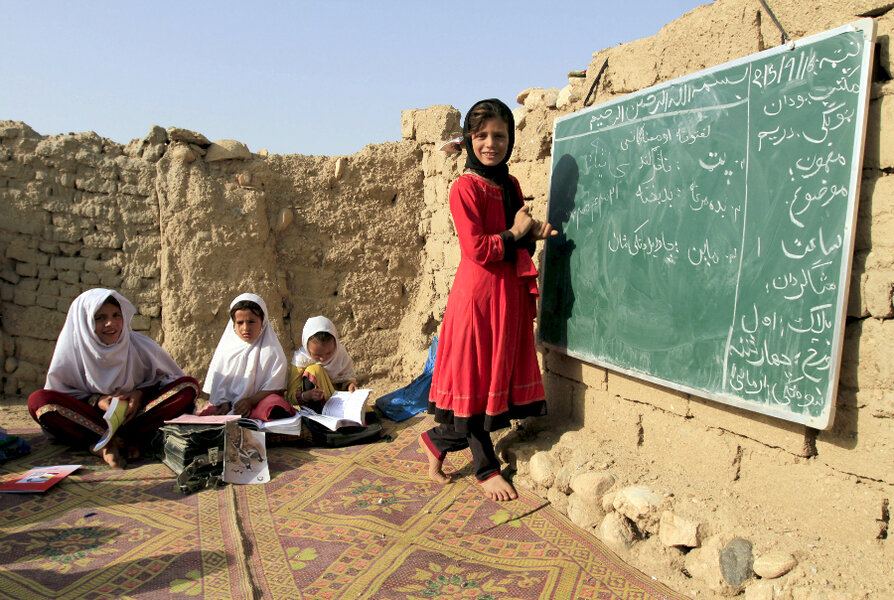'Frugal innovation' does more with less to find solutions
Loading...
In the global development world, one particular “buzz word” has been gaining momentum... and it might be the most common sense of them all.
“Frugal innovation” is a trendy term for a widely known – yet often overlooked – fact: The developing world cannot afford to throw massive resources at increasingly complex technologies to solve its problems. The developed world’s “model is ... too costly, elitist, and rigid and fails to address even basic socioeconomic needs,” explains innovation and leadership strategist Navi Radjou.
World leaders gathered in September in New York for the UN Sustainable Development Summit to adopt a list of sustainable development goals that address issues like climate change, poverty, and global health care. The goals set targets for governments, foundations, and entrepreneurs around the world to solve major global issues by 2030.
Radjou, a Fellow at the University of Cambridge, advocates that the success of the sustainable development goals will depend on more cost-effective, straightforward solutions.
In his 2014 TED/Global talk, Radjou illustrated that the “more (and better) with less” strategy is indispensable in developing new technologies, especially for universal access to health care. In many cases, simply paring down technologies that already exist makes them more widely accessible.
Accessibility, along with sustainability, affordability, and quality, are the four cornerstones of frugal innovation. They ensure that the technologies make it to the populations that need them most and, further, that the technologies will thrive there.
PATH, an international health organization that strives for adequate health care worldwide, is a strong advocate for frugal innovation. Last year, its Innovation Countdown 2030 initiative invited experts to submit innovative ideas that could accelerate health care progress in the next 15 years. From more than 500 submissions, a third of which came from low- and middle-income sources, emerged 30 innovations deemed most promising in the crusade for adequate health care.
PATH's Reimagining Global Health report highlights these high-impact solutions. It shows, for instance, that rice fortification is a simple way to combat malnutrition – especially in children – by packing more nutrients into a food that millions already eat. Portable, affordable vision testing machines can be operated by low-level technicians to ensure proper eye care. And new oral "preexposure" drugs can prevent HIV infection in groups at high risk, such as injection drug users and sex workers. Other innovations address common health issues like malaria, diarrhea, pregnancy and postpartum complications, and heart disease.
International development organization BRAC, with its annual Frugal Innovation Forum, as well as USAID’s Global Development Lab and UCLA’s Global Lab for Innovation, are hopping on board the frugal innovation trend as well. Following PATH’s lead, these initiatives are crowdsourcing ideas and opening their development initiatives to the global community.
This crowdsourcing is essential to frugal innovation. Some of the most effective innovations derive not from experts with infinite resources but from individuals who come from the very conditions of poverty they are trying to eradicate – “where the street is the lab,” Radjou says.
Arunachalam Muruganantham, for example, created a simple machine that has provided thousands of women with much-needed sanitary pads. He was a poor college drop-out living in rural India when he built his machine out of sheer necessity as he realized his own wife lacked access to basic feminine hygiene.
And in Kenya, two university students from rural villages came up with a system to recharge a cell phone battery using energy generated from a bicycle.
"We took most of [the] items from a junk yard – using bits from spoiled radios and spoiled televisions," one of the students told the BBC.
After decades of technological advances that championed ever more bells and whistles, the time has come to lose the frills and deal with the problems at hand. And by getting back to basics, frugal innovation allows low-income populations to play a major part in their own progress.
For more on this trend, watch USAID’s catchy Youtube video here.
• This article originally appeared at Global Envision, a blog published by Mercy Corps.







